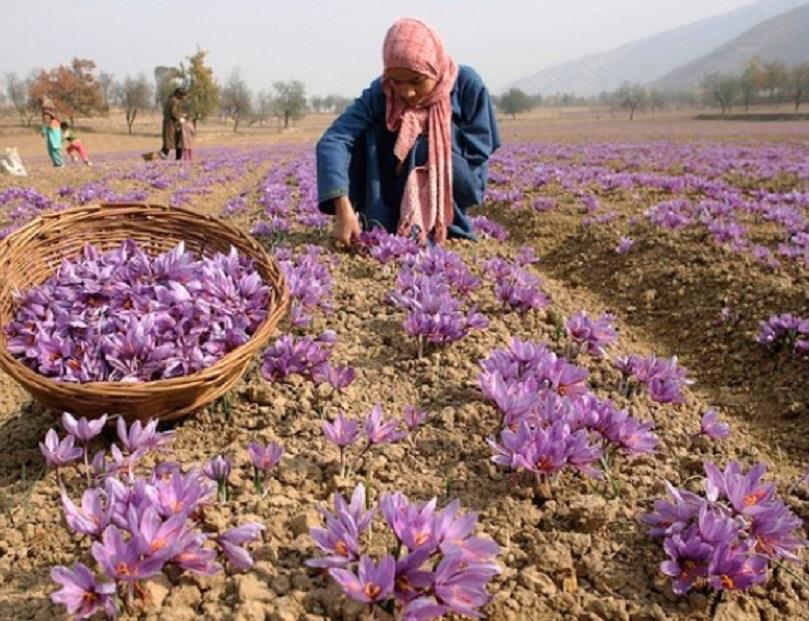
Kashmir's Golden Crop Faces A Climate Threat
File photo
By Dr. Waseem Ahmad
At a recent wedding in Pampore, a waiter ladled golden saffron gravy over rice and crimson meat. Guests picked up the food with practiced ease, their fingers stained the bright yellow of tradition and celebration.
For a few hours, saffron, the spice of prosperity, purity, and joy, ruled the table. Outside the marquee, however, in the very soil that produces this treasure, saffron is slipping through our fingers.
Kashmir has long been India's saffron paradise, second only to Iran and Afghanistan on the world stage.
Pampore, known as the golden city of saffron, has nurtured the delicate crocus sativus flower for centuries.
Each autumn, fields should erupt in a sea of purple petals, and from each flower, three fragile red stigmas are plucked by hand. This ritual is painstaking and sacred.
For generations, the harvest has been a rhythm tied to land, climate, and human care.
But today, that rhythm is faltering.
Saffron requires something Kashmir can no longer reliably offer: predictability.
The crocus needs a long, cold winter, at least 1,100 hours below freezing, and a dry spring, besides well-timed August rains.
But now, winters have grown warmer. Springs bring unexpected storms, and May hail has become a growing threat. Monsoons sometimes fail to arrive.
What was once a dependable cycle has become a gamble.
Mohammed Yousuf, a saffron farmer in Pampore, has witnessed this climate change firsthand. His cupboard holds the remnants of last year's harvest: red threads more precious than gold by weight.
He once gathered eight kilos in a season. Now, one kilo feels like a triumph.
Yousuf separates the finest threads with a sieve, laying them on imitation leather sheets instead of the traditional white linens. It is a silent concession to labour, time, and wear.
The saffron grower's story is echoed across the valley, where generations watch their traditions wilt under a sun that shines too hot, for too long.
This unfolding saffron crisis is deeply cultural, emotional, and spiritual setback.
In Kashmiri weddings, saffron is an invocation of joy. Its colour seeps into every dish, its scent into every memory, and the yellow-tinted fingers left behind marks of belonging.
Losing saffron would mean losing a piece of collective identity, in Kashmir and beyond.
Around five percent of Kashmir's workforce is engaged in saffron cultivation. For many families, it is the primary source of income in a region already burdened by limited employment opportunities.

Legal Disclaimer:
MENAFN provides the
information “as is” without warranty of any kind. We do not accept
any responsibility or liability for the accuracy, content, images,
videos, licenses, completeness, legality, or reliability of the information
contained in this article. If you have any complaints or copyright
issues related to this article, kindly contact the provider above.

















Comments
No comment